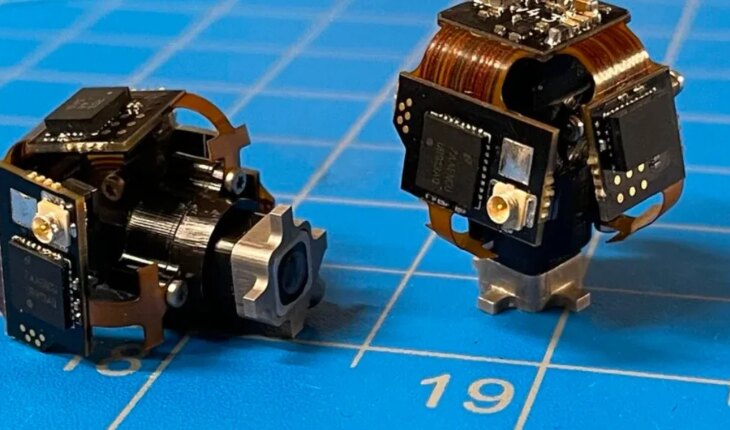They enter the palm of the hand and weigh no more than a large coin, but their circuits allow something that until 10 years ago seemed a utopia: to record the activity of thousands of neurons that fire at the same time in the brains of mice that can move freely. These are miniature microscopes that are generically called miniscopes (or “miniscopes”, in English), thanks to the fact that back in 2016 the American scientist Daniel Aharoni coined that term to refer to the small open source devices that he was developing with the team of his laboratory at the University of California, Los Angeles (UCLA). Currently, about 15 academic groups from different countries are working on the development of their own models of miniscopes and there are expensive commercial versions, but the tiny instruments developed by Aharaoni’s group are among the most widely used worldwide: they are sold already armed or in the form of an assembly kit. “I estimate that about 700 groups around the world built or have one of our Miniscopes“, said the scientist in dialogue with the CyTA-Leloir Agency, and stressed that he uses the capital “M” to differentiate his devices from the rest of the miniature microscopes.Our project is specifically aimed at building these tools in a way that all neuroscientists around the world can understand, pay for and use. And that’s incredibly rewarding.” added Aharoni, whose research sits at the intersection of engineering, neuroscience and physics. With the aim of introducing this new tool in Latin America, Aharoni came to Buenos Aires with his “Miniscope Team” to give a four-day course on “miniature fluorescent microscopy” at the Leloir Institute Foundation (FIL). Between December 12 and 15, 21 students from the region were awarded scholarships to learn about the operation of these devices that in the last 10 years generated a revolution in neuroscience trials and of which there are three in the FIL. The workshop was possible thanks to the support of the International Society for Neurochemetry (ISN), The Grass Foundation, The Company of Biologists and the José A. Balseiro Foundation.”All the devices launched by the group led by Aharoni are open source, meaning that the design files are available in a public repository. Then, anyone who wants to can download and adapt them as it suits them.“, said the Argentine Federico Sangiulano, who in 2019 joined the “Miniscope Team”, after having completed a two-year internship at the Laboratory of Physiology and Brain Algorithms directed by Emilio Kropff at the FIL. “We also have public forums for users to make inquiries. There is a whole sense of community where people share knowledge and we try to lower the barrier to entry so that any laboratory in the world can use this recording technique. This is what sets us apart” he added. The Miniscope V4, the latest version, is a single-photon fluorescence microscope that weighs 2.6 grams and is 2 mm high. “It records neuronal activity by fluorescence, that is, it illuminates the brain as neurons are activated, because they emit photons, and we record them with an image sensor that is under the microscope. That is recorded and then we can process the data.” Sangiulano reported. The ITBA electronic engineer added that the platform also has external cameras – such as security cameras – to be able to see the behavior of the animals. “It is very important not only to record the activity in the brain, but also what the mouse is doing in order to correlate the information.” he said. Aharoni, a PhD in physics who specialized in the study of dark matter before focusing on the development of Miniscopes, is convinced that “For the future of neuroscience it is extremely important to be able to see what is happening in the brains and how that connects with the behavior of animals.“. As for what is to come, the American was encouraged to predict a wireless future for the next five years: “There are groups that achieved very good two-photon miniscope designs, so I think these more advanced and complex devices will start to be used more and that’s great. The other direction, which is where my group isScraping, is based on making the same tools we have today, but substantially smaller and without cables. This will allow us to capture truly natural behaviors, which is the focus where we need to go.” he concluded.
Miniature Microscopes: The Tool Revolutionizing Neuroscience
December 21, 2022 |





